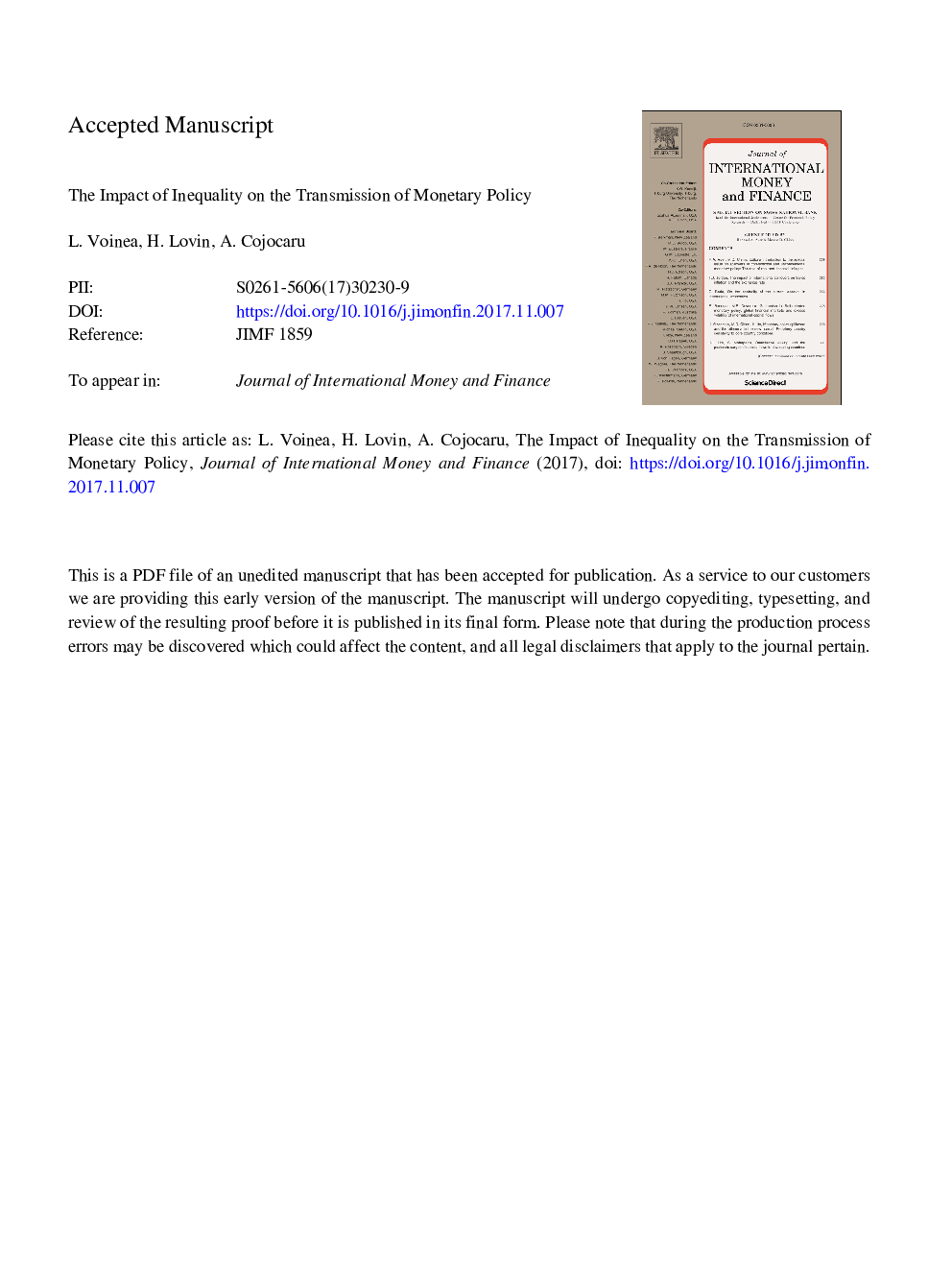| Article ID | Journal | Published Year | Pages | File Type |
|---|---|---|---|---|
| 7365209 | Journal of International Money and Finance | 2018 | 28 Pages |
Abstract
We consider a model to detect the relation between household debt and the transmission of monetary policy in an EU Member State with independent monetary policy and high income inequality (Romania). We find that households response to changes in monetary conditions depends on their income and indebtedness profile. The transmission of monetary policy is more effective for middle income households, which are more indebted and have adjustable rates, as lower policy rates ease the consumption constraints on these households. Low income households respond mainly to budgetary policies, as the increase in disposable income matters most for the bottom quintile. Top income quintile reacts more to monetary policy than bottom quintile, but less than middle income quintiles. Lower inequality is associated with stronger effectiveness and higher homogeneity of monetary policy transmission; in turn, higher inequality is associated with less effectiveness and higher heterogeneity of the impact of the monetary policy.
Related Topics
Social Sciences and Humanities
Economics, Econometrics and Finance
Economics and Econometrics
Authors
L. Voinea, H. Lovin, A. Cojocaru,
